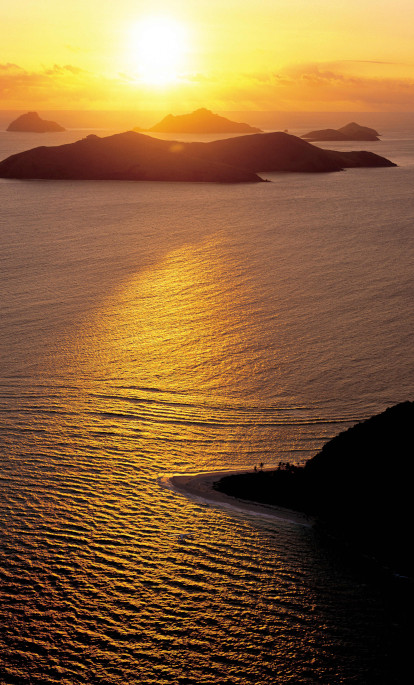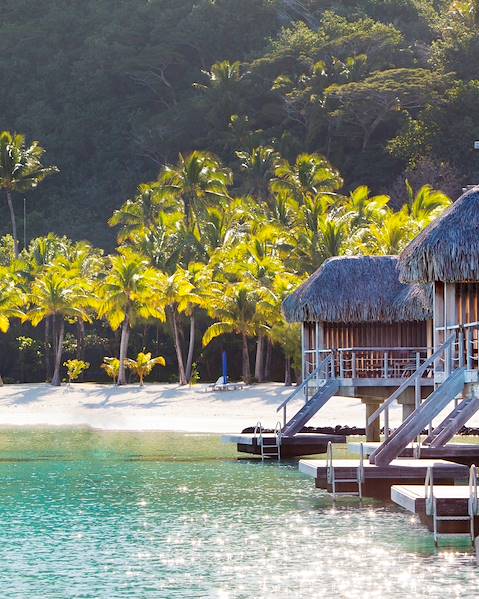Population
The population of Fiji is around 924,610 (2021).
Language
Fiji has three official languages: Fijian, English and Fiji Hindi. Fijian is spoken as the first language by the majority of indigenous Fijians, who make up 54% of the population. Indo-Fijians form 37% of the population and mainly speak a local variant of Hindi, called Fijian Hindi. English was the sole official language until 1997, as a remnant from British colonial rule over the islands, and is still widely used in government, business and education. A few other Indigenous West Fijian and East Fijian regional languages are spoken on the islands, while Arabic and Urdu are also spoken by Muslims.
People
Indigenous Fijians make up more than half of the population of Fiji, while around two-fifths are people of Indian descent. There are minorities of part-Europeans, Chinese and Pacific Islanders who have origins outside of Fiji.
Religion
Christianity is the dominant religion in Fiji, with 64% of the population practicing the religion. Other religions include Hindu (28% of the population) and Muslim (6.3%). Religion tends to divide along ethnic lines, with most Indigenous Fijians being Christian and most Indo-Fijians being either Hindu or Muslim.
National Holiday
Fiji’s National Day is the 10th of October, which is a public holiday to celebrate and commemorate the island’s independence from British colonial rule in 1970.
Holiday Calendar
2 January: New Year’s Day
Friday before Easter Sunday: Good Friday
Day before Easter Sunday: Easter Saturday
Monday after Easter Sunday: Easter Monday
7 September: Constitution Day
2 October: Prophet Mohammed’s Birthday
10 October: Fiji Day
13 November: Diwali
25 December: Christmas Day
26 December: Boxing Day
History
Fiji was first settled by the Lapita culture from around 1500 to 1000 BC, followed by an influx of people from the Melanesia islands at the beginning of the Common Era. Settlers lived in small communities and traditional Fijian society was highly hierarchical, with warfare playing an important part of everyday life. The first Europeans to visit the islands were Dutch explorer Abel Janzsoon Tasman, who passed the northeast fringe of the group in 1643, and the British navigator James Cook, who visited the south-eastern islands in 1774. However, it was not until 1789 that the islands were charted and plotted, when William Bligh sailed between the main islands. Commercial interests in the islands began at the beginning of the 19th century, when the discovery of sandalwood in 1804 meant Western trading ships started to visit Fiji more frequently. Some of the Europeans who came to Fiji in this period were accepted by the locals and remained on the islands as residents. Within little more than a decade, sandalwood supplies had been depleted, so by the 1820s traders instead visited to trade for edible sea cucumbers. Subsequently, Levuka was established as the first European-style town in Fiji, on the island of Ovalau.
By the 1860s, the islands were attracting European settlers intent on establishing plantations to capitalise on a boom in cotton prices following the American Civil War. This led to disputes over land and political power between European and Fijian communities, which exacerbated existing instability within Fijian society. On October 10th 1874, Fiji became a British crown colony and the policies of the first governor, Sir Arthur Gordon, were influential in shaping the islands’ history. He introduced policies which limited their input regarding commercial and political decisions. During the Second World War, Fiji was occupied by Allied forces and following the war, colonial authorities restructured the Fijian administration and reinforced the conservatism of Fijian society.
The movement towards independence began in the 1960s, with the 1966 constitution containing compromises between the principles of parliamentary democracy and the ethnic divisions within the country. Fiji gained independence as the Dominion of Fiji on 10th October 1970, before being declared a republic in 1987, following a series of coups d'état. The years following independence were turbulent politically and after years of delays, a democratic election was held on 17th September 2014. Commodore Frank Bainimarama's Fiji First party won with 59% of the vote, and the election was considered credible by other countries.
Politics
The politics of Fiji take place within the framework of a parliamentary representative democratic republic. This involves a multiparty system, with the Prime Minister of Fiji as head of government. Executive power is exercised by the government, while legislative power is vested in both the government and the Parliament of Fiji. The judiciary is mostly independent of the executive and the legislature.
Etiquette
Fijian society remains fairly conservative, so it’s appropriate to dress more conservatively (covering shoulders and knees), especially when visiting villages in Fiji. Bathing topless is strictly prohibited and both men and women should wear sulus (Fijian sarongs) covering their knees in Fijian villages. Sunglasses and hats should be removed. Locals always greet each other with the word ‘bula’ when passing – again, especially in villages and rural areas – and it’s considered rude to walk by someone without greeting them. However, in larger towns, ‘bula’ can sometimes be used to try and sell you something. The pace of life in Fiji is often a lot slower than in other countries, so don’t expect things to run on time. ‘Sega na leqa’ (meaning no worries) is the Fijian phrase which encapsulates this laid-back attitude towards life, similar to the use of ‘mañana’ in Latin America. It’s advisable to avoid visiting a village on a Sunday, as this is considered a day of rest for families. Tipping is not customary or required in Fiji, however if you are happy with the service, a tip will be appreciated.
Shopping
Fiji is home to a selection of boutique shops and handicraft markets, overflowing with local produce and authentic souvenirs. Both Nadi and Suva have special handicraft markets, selling traditional wares, such as pattern-rimmed tanoa bowls, bags woven from pandanus leaves and jewellery made from coconut shells. The best places to buy local crafts direct from artisans are at the Flea Market in Suva or at one of the craft fairs in Nadi, which are held every few months. Avoid buying whale’s teeth (tabua) and shells, especially turtle and triton shells, as these are banned as export items. Shops are few and far between on the outer islands, so it’s a good idea to take supplies (such as suncream, which is sold at inflated prices) with you if venturing to resorts further out.
Food & Drink
Typical Fijian cuisine is based around the staples of rice, sweet potato, cassava, fish, coconut and taro (a large corn). Fresh fish, lobster, shrimp and meat are also staples and often cooked in a Lovo (an underground oven, covered with banana leaves). Some commonly found dishes include Kokoda (Fijian-style ceviche), fish suruwa (a coconut milk and white fish curry), rourou (stewed taro leaves, flavoured with onions and green chillies) and cawaki (an edible sea urchin). For those with a sweet tooth, purini is a classic Fijian dessert, similar to a steamed English pudding but made with coconut milk instead of dairy. Kava (also known as yaqona) is Fiji’s national drink, although it represents much more than this and is also a big part of the islands’ culture. Produced by crushing the roots of a kava plant into a powder, the drink has a mild relaxing effect and is used as part of the welcoming ceremony at Fijian villages. Rum, which is brewed from local sugar, is often used to ‘wash down’ kava and sweeten the palate. Felling fresh coconuts from palm trees is popular among Fijians, and trying this refreshing drink straight from its source is a must while in Fiji.














